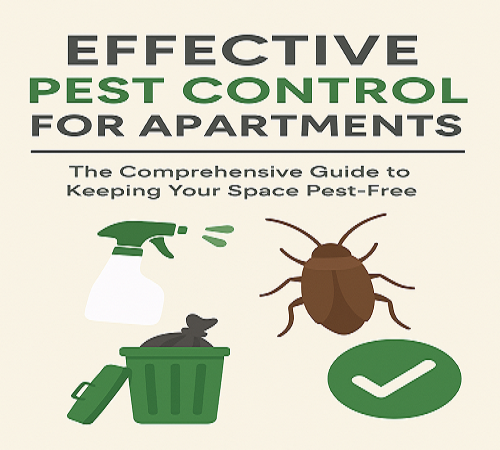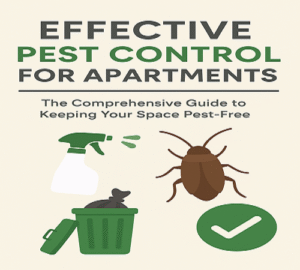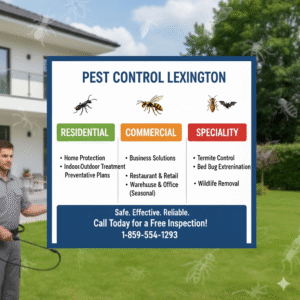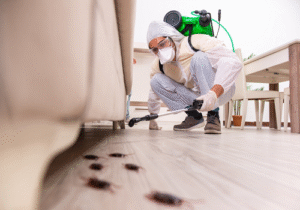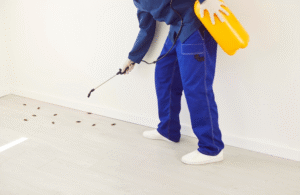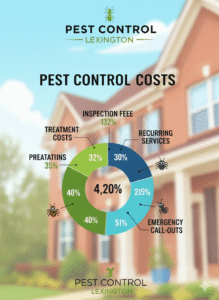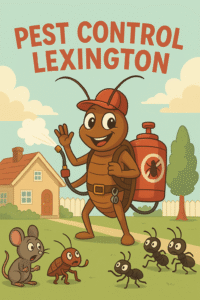The Unique Challenge of Apartment Pest Control
Living in an apartment is super convenient, but it comes with one big downside: shared walls. When you live in a multi-unit building, your neighbours’ habits can quickly become your problem, and a pest issue in one unit can rapidly spread throughout the structure. Whether it’s a tiny gap in the baseboard or a leaky pipe in the unit next door, pests see your building as one big, interconnected buffet.
For renters and property managers alike, staying a step ahead with prevention makes all the difference. If you live in the area, understanding the local needs for pest control in Lexington is the first step toward a successful strategy.
Here’s a simple guide to help you stay ahead of pest problems in apartments, combining diligent housekeeping with structural barriers and even professional help.
Eradicating Food and Water Sources (The Pests’ Primary Motivation)
Most pests come looking for the basics: food and water. Eliminating these readily available resources is the single most effective action you can take.
The Crucial Role of Food Storage
The biggest culprit in apartment infestations is improperly stored food.
- Airtight Containers are Non-Negotiable: Invest in high-quality, hard plastic, glass, or metal containers with secure, airtight seals for all dry goods. This includes flour, sugar, cereal, pasta, rice, pet food, and even spices. Pests like weevils, pantry moths, and cockroaches can chew right through thin cardboard boxes and plastic bags. By eliminating the scent and the access, you cut off their food supply entirely.
- Keep the Countertops Clear: Never leave food or dirty dishes out overnight. A small plate of crumbs is a feast for ants and roaches. Develop a habit of wiping down all kitchen surfaces, sweeping the floor, and rinsing the sink before you go to bed.
- Fruit Fly Management: Place ripe produce, especially bananas and tomatoes, in the refrigerator or use a fruit bowl with a mesh cover. If you notice a fruit fly problem, dispose of ripe produce immediately.
Controlling Moisture and Humidity
Pests like cockroaches, silverfish, and earwigs thrive in damp, dark conditions.
- Immediate Leak Reporting: Be hyper-vigilant about leaks. A constantly dripping faucet under the sink or a running toilet provides an ideal water source. Report any plumbing issues to your property manager immediately. It might seem like just a maintenance issue, but it’s actually a serious pest concern, too.
- Improve Ventilation: Always use the bathroom exhaust fan during and after showers for at least 15-20 minutes to pull moisture out of the air. In the kitchen, use the range hood fan when cooking.
- Check Vents and Drains: Periodically pour a cup of water down unused drains (like in a laundry tub) to prevent the trap from drying out, which can allow insects to crawl up the pipes.
Implementing Structural Barriers (Sealing the Building)
Pests don’t need an open door; just the tiniest crack is enough. Your preventative maintenance should focus heavily on blocking these tiny ingress points.
The Caulk and Sealing Strategy
- Seal the Gaps: Purchase a good-quality silicone caulk and use it to seal any visible cracks or gaps in your apartment. Focus on baseboards, particularly in the kitchen and bathroom, and around window and door frames.
- Address Utility Penetrations: Critically, seal the areas where pipes, wires, and cable lines enter the walls. Look under the kitchen and bathroom sinks, behind the stove, and near the washing machine connections. These holes are often large enough for mice to pass through. For larger holes, use steel wool before sealing with caulk, as mice cannot chew through it.
- Examine Doors and Windows: Check the weather stripping and door sweeps. If you can see daylight under your door, pests can get in. Request that your property manager replace damaged seals.
Balconies and Outdoor Access
Even if you’re on the 10th floor, your balcony can be a pest attractant.
- Plant Management: Avoid excessive standing water in plant saucers, which creates mosquito breeding grounds. Check large planters for slugs, snails, and earwigs that can migrate indoors.
- Furniture Storage: If storing cushions or outdoor fabrics, ensure they are dry and sealed, as they can attract spiders and mice looking for nesting material.
Waste Management: Your First Line of Defense
Proper waste disposal in an apartment building is a communal responsibility, but managing your own unit’s trash is the foundation of preventing infestations.
- The Power of the Lid: Use a kitchen trash can with a tight-fitting, secure lid. This prevents odours from escaping, which attracts pests from other units and stops insects from crawling in.
- Frequent Emptying: Take out the trash daily, especially during the warmer months and when disposing of meat or fish waste. The longer the waste sits, the more appealing it becomes.
- Rinse Recyclables: Always rinse food residue from cans, bottles, and plastic containers before placing them in the recycling bin. Sugary drink residue is a huge attractant for ants and cockroaches.
When to Call the Professionals: Addressing Infestations
Even with perfect habits, living in a shared space means you might inherit a problem or be impacted by a neighbour. If you notice persistent signs of activity, such as droppings, smear marks, or frequent sightings, the situation requires more than a DIY approach.
Don’t resort to ineffective store-bought sprays and bombs. They can often drive pests into the walls and into other units without resolving the core issue. When the problem escalates, you need expert help.
Understanding Professional Services and Pricing
Many residents in the area often ask about Pest Control Pricing in Lexington. While final costs depend on the severity and type of pest (for example, bed bugs or termites are more expensive than general insects), a transparent provider will offer clear quotes.
- Initial Visit: This typically involves a thorough inspection to identify the pest, the extent of the infestation, and all entry points. This is usually a higher one-time fee.
- Maintenance Plans: For apartments, a quarterly or bi-monthly maintenance plan is often the most cost-effective and preventative long-term solution.
To help your decision, consider searching for the top 5 pest control providers in Lexington based on their experience with multi-unit dwellings, customer reviews, and their commitment to using apartment-safe, low-toxicity treatments. A reputable company will provide a clear, detailed plan before any work begins.
Conclusion
A pest-free apartment contributes to a healthier and happier living environment. By committing to the three key pillars of prevention, like eliminating food/water, sealing all structural gaps, and meticulously managing waste, you can significantly reduce the risk of infestations.
In shared apartment buildings, prevention sometimes isn’t enough. When pests spread through walls and shared utilities, professional help becomes essential. If you’re noticing persistent signs of pests, don’t wait for the problem to grow.
At Pest Control Lexington, we specialize in handling the unique pest challenges of multi-unit properties, using safe and effective treatments tailored for apartment living. For reliable pest control services, we are the trusted choice.

